

The photos below will show the naturalized (some would say invasive) T. angustifolia (narrow leaf) species on the left, and the native T. latifolia (broad leaf) species on the right. The comments below the photos are generally regarded as important distinctions between the two species but they are not foolproof. Keep in mind that structures change through development and in response to moisture conditions. A hybrid between these two species (T. Xglauca) is common in our area. Its characteristics are usually described as intermediate between it's two parent species. The hybrid may exhibit variations and different combinations of the characterists shown for the parents. The pictures below were taken in June approximately two weeks after anthesis (pollen shedding).
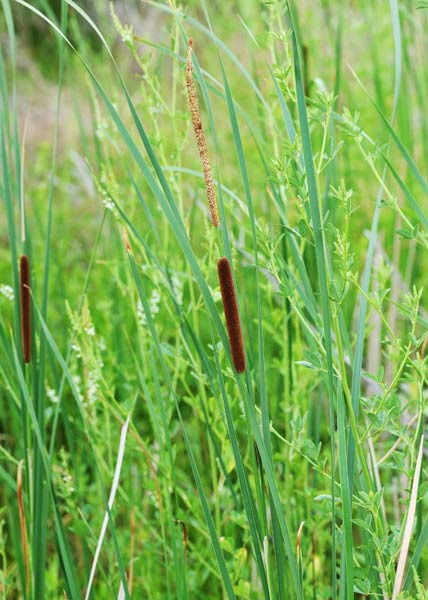
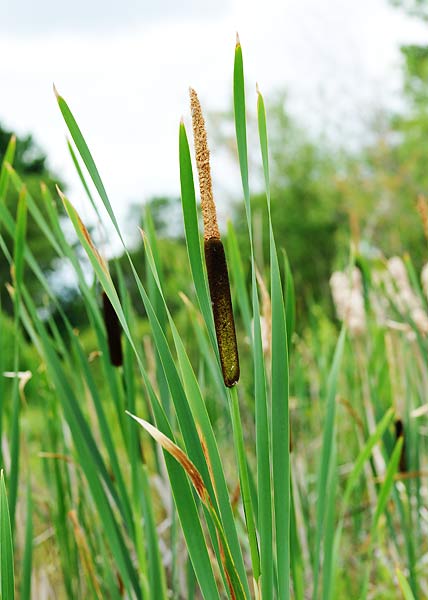
When you see a mature stand of cattails from a distance, the pistillate spikes of the narrowleaf species appear near the middle of the leaf heights. The pistillate spikes of the broadleaf species appear near the top of the leaf heights. When you see cattails before they lose their staminate spikes, the narrowleaf species shows more than two cm of floral axis (stem) between the spikes and usually no space (or very little) between the two spikes in the broadleaf species.
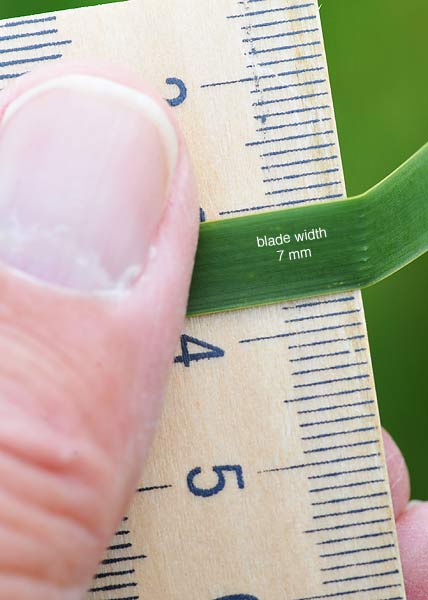
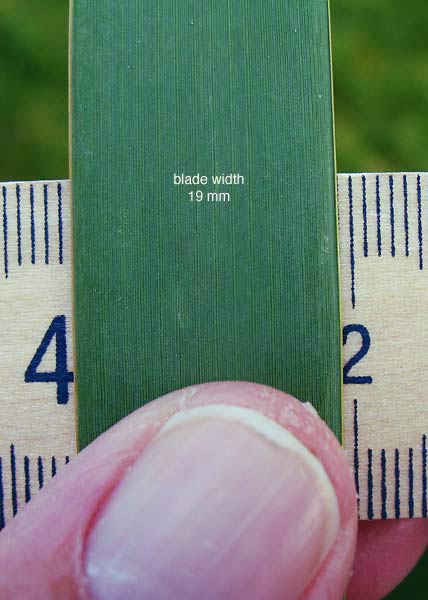
The widest blade width for the narrowleaf species is usually less than 10 mm; The widest blade for the broadleaf species is usually more than 10 mm. Near the base the blades of both species feel inflated because they are plano-convex in cross section. The blades of the broadleaf species become flatter in the distal half.
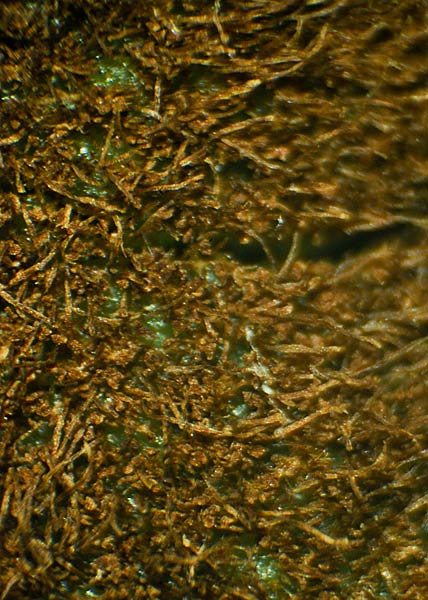
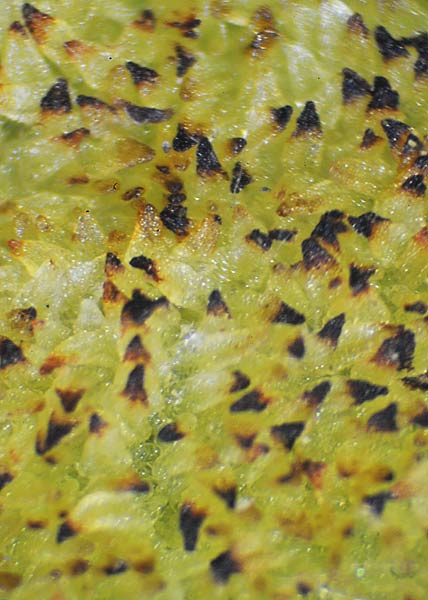
Under magnification (10x is sufficient) the pistillate spike shows a distinction between the two species. The narrowleaf species has linear structures—the reddish-brown stigmas in the photo above. Beneath the stigmas can be seen the green tops of carpodia (plural of carpodium) and sometimes the dark brown flattened tips of bracteoles. The broadleaf species has overlapping tongue shaped stigmas that turn from green to brown as they dry out after flowering. Carpodia are positioned too deeply to be seen and bracteoles are absent from the broadleaf species.

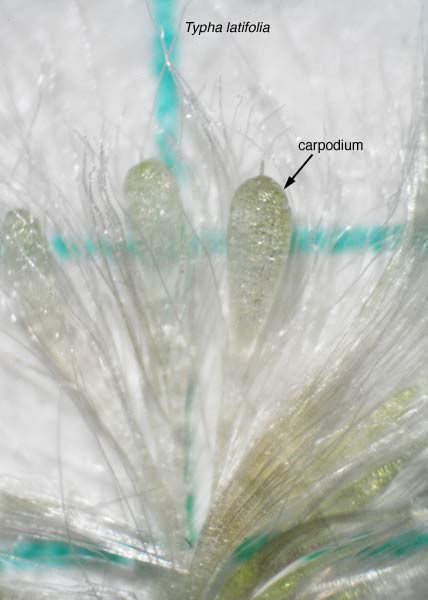
Carpodia are found in both species. They can be seen under magnification (about 20x here) when you look at a cross section or remove a plug (with forceps) from the pistillate spike. I have yet to see an explanation for their role but it is suggested that they are derived from modified embryos—the tiny spike at the top being a remnant of a withered style. The narrowleaf species has many flat topped carpodia near the surface of the spike. the broadleaf species has mostly round headed carpodia positioned further from the spike surface and mixed with the hairs attached to the axis of the spike. The narrowleaf species (but not the broadleaf species) contain bracteoles which are slightly thicker than the hairs that extend from the spike axis. bracteoles have flattened tips that are interspersed with the carpel stigmas at the surface of the pistillate spike.
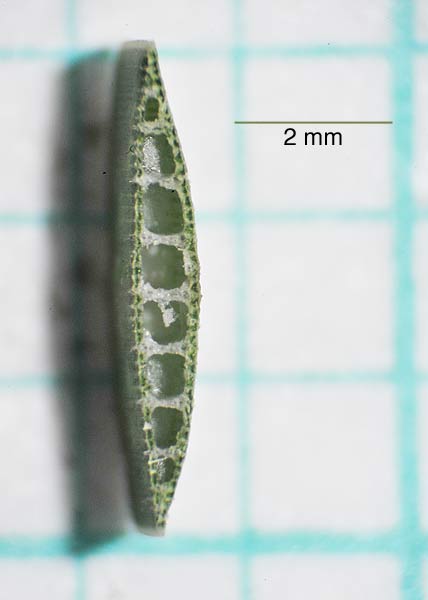

The outer surface of the leaf in both species is convex near the origin and feels inflated. The narrowleaf species remains so for most of the leaf length. The most distal half of the leaf of the broadleaf species is flat.

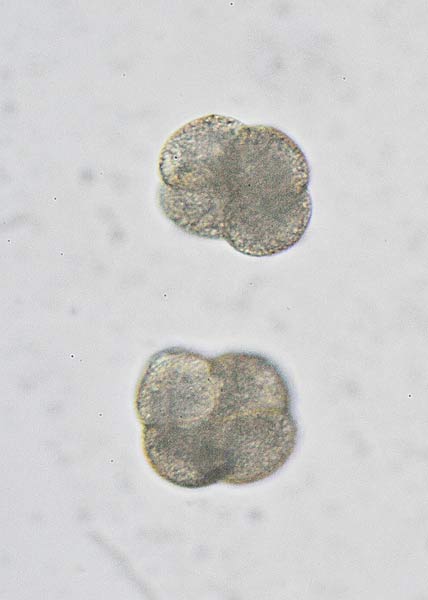
Pollen grains for the narrowleaf plant are released as single grains (monads). Those of the broadleaf plant (T_latifolia) are released as clusters of four (tetrads). The hybrid (T. × glauca) has a mixture of pollen clumpings [See: Sarah A. Finkelstein; 2011; Canadian Journal of Botany - Identifying pollen grains of Typha latifolia, Typha angustifolia, and Typha × glauca]
It is difficult to identify this hybrid by morphology in the field (or herbarium). The leaves are generally less than 10mm in width but vary in width and are easy to confuse with the narrow leaf parent. The best suggestion for field identification, that I know of, was provided to me by Dr. Robert Wernerehl who said "... look for a gap between male and female flower of 1/2 inch or so, combined with height 6 feet or taller. Generally, the real narrow leaf (not the hybrid) has quite a large gap, several inches, between male and female flowers and is always below or at my eye level for total height and I'm 5 foot 10 inches tall. In addition, I look in highly disturbed sites. I suspect many herbarium records and photos of these are incorrectly labeled."
Iowa has two species of Typha; T. angustifolia (alien) and T. latifolia (native). Together they can produce the mostly sterile (yet prolific) F1 hybrid T. × glauca which is believed to be abundant in Iowa.
Dr. S. Galen Smith (1926-2015), who wrote the descriptions of Typha for FNA, identified a few small colonies of another species, Typha domingensis (southern cat-tail) near Madison Wisconsin (ca 2011). This was further north than it would be expected and further north than much of near-by Iowa where it had not yet been identified. Dr. Smith mused that perhaps climate warming was allowing T. domingensis to move further north and it might eventually be showing up in Iowa.
Just to the south of Iowa (the southern Great Plains) T. domingensis is abundant. It hybridizes readily with the two recorded Iowa species. When it hybridizes with T. latifolia the largely sterile hybrids look very similar to T. × glauca. Hybridization withT. angustifolia develops very fertile hybrids which produce lots of viable seed and pollen. These can establish hybrid swarms which blur the morphological distinctions between parent species and their hybrids . If T. domingensis enters Iowa, we might need to give cladistics a try at unraveling hybrid parentage.
USGS map for T. domingensis
Iowa locations for T. domingensis